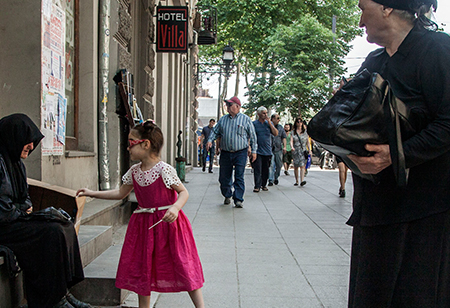Georgia’s minimum subsistence level increases

The cost of living in Georgia is increasing, reflecting the increasing costs of basic food and services.
Latest figures from Geostat, the National Statistics Office of Georgia, noted the country’s minimum subsistence level (amount of money a person needed to support themself) had slightly increased in the past 12 months.
Figures showed the minimum subsistence level for an able-bodied male was 160 GEL in February 2015. This was about 5 GEL higher than in February 2014, where the minimum subsistence level was 155.3 GEL.
Meanwhile for the average consumer, the minimum subsistence level was 141.7 GEL this February, while it was 137.6 GEL at the same time last year.
For an average family the minimum subsistence level reached 268.4 GEL in February 2015 – up about three percent on February 2014 when the same data was 260.6 GEL.
As for households, the minimum amount of money needed to survive was:
- For a one-person household – 141.7 GEL
- For a two-person household – 226.8 GEL
- For a three-person household – 255.1 GEL
- For a four-person household – 283.5 GEL
- For a five-person household - 318.9 GEL
- For a six or more person household – 377.0 GEL
Statistics showed that in comparison to the past year, these numbers had grown however this could be comparable with increasing costs of basic goods and services.
In February 2015, the monthly inflation rate in Georgia reached 0.1 percent. As for the annual inflation rate, it equalled 1.3 percent in February 2015, noted Geostat.
In February, the increasing cost of healthcare was mainly responsible for the slight monthly inflation increase. In this respect, the price of healthcare increased 0.9 percent, with a relevant contribution of 0.09 percentage points to the overall monthly inflation rate. It is worth noting prices of the subgroup of medical products, appliances and equipment rose by 2.4 percent. Prices were also higher for out-patient services (0.7 percent) and hospital services (0.3 percent);
As for the annual inflation rate, price changes were observed in the following groups:
Health: Prices increased 6.4 percent and contributed 0.67 percentage points to the overall annual index. Costs increased for medical products, appliances and equipment (11.1 percent), outpatient services (4.4 percent) and hospital services (5.2 percent);
Food and non-alcoholic beverages: The cost of food and non-alcoholic beverages increased 1.9 percent, contributing 0.60 percentage points to the overall annual inflation rate. Price rises were recorded in the following subgroups: fruit and grapes (18.6 percent) and meat (4.2 percent). Conversely, the cost of vegetables dropped by 6.1 percent;
Alcoholic beverages, tobacco: The cost of alcohol and tobacco increased 8.1 percent, contributing 0.42 percentage points to the overall annual index. Specifically, the cost of tobacco increased by 10.6 percent;
On the other hand, the cost of transport decreased year-on-year.
Transport: The cost of transport dropped 7.8 percent, contributing -0.94 percentage points to the overall annual inflation rate. Costs were also down for operation of personal transport equipment (-12.9 percent). Along with this, a 10.1 percent increase was noted on the price of vehicle purchases.
Rising living costs could also be justified in relation to the 2015 consumer basket, which was released by Geostat in early February.
The composition of the updated 2015 consumer basket remained identical to the consumer basket of 2014, which both contained 295 items, however the 2015 consumer basket was more expensive.
Each year the weights of the products and services were updated to reflect any changes.
The consumer basket was used to calculate the Consumer Price Index - the inflation rate in the country - which reflected the structure of consumption of products of an average consumer in the country.
This year food and non-alcoholic beverages made up 30.74 percent of the consumer basket. Products in this category included rice, buckwheat, manna-croup, wheat bread, macaroni products, vermicelli, cake, waffle, toast and wheat flour. These items were the first ten products listen in this category.
Similarly, alcoholic beverages and tobacco made up 5.19 percent of the 2015 consumer basket.
 Tweet
Tweet  Share
Share